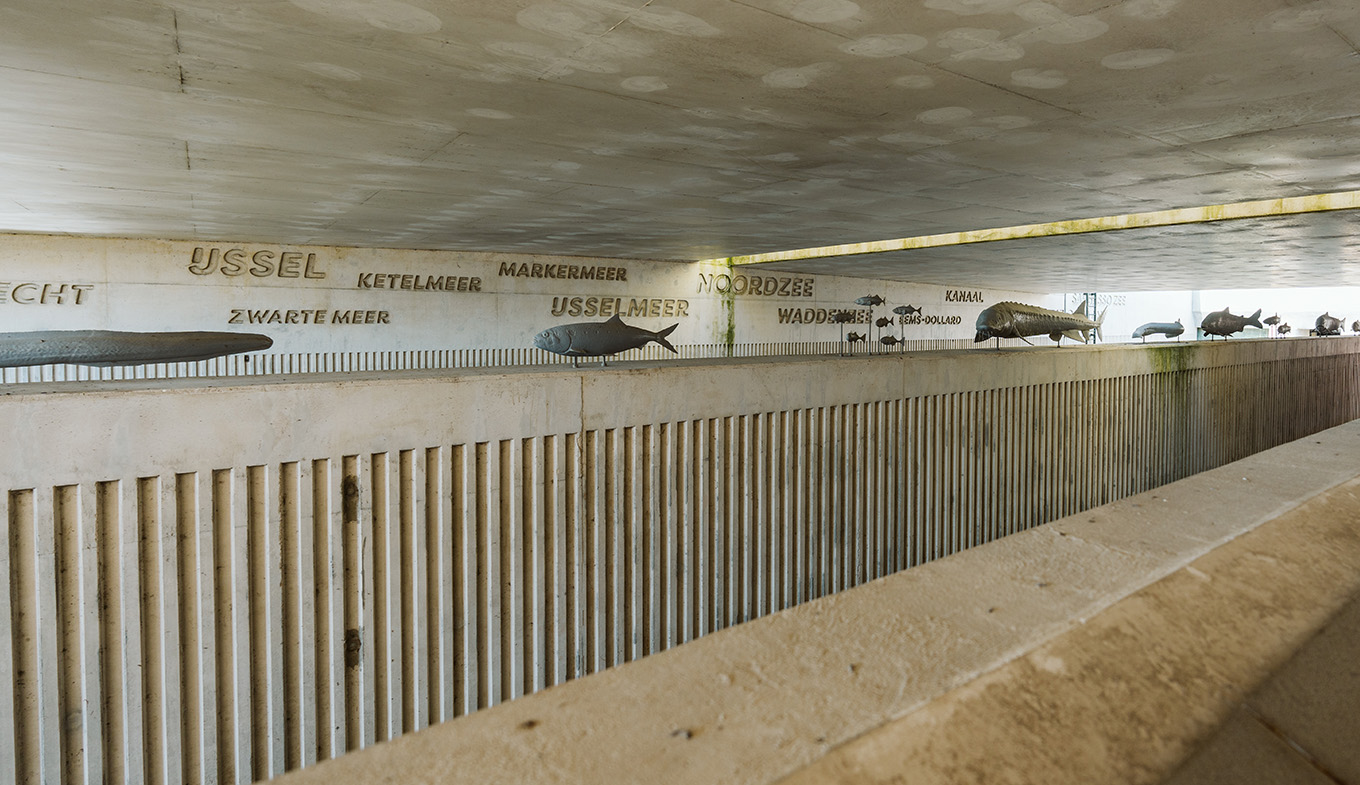
Fish migration flow at the Afsluitdijk - Nov. 19, 2024
The fish migration river on the Afsluitdijk is unique in the world. In a spiral structure, it gives migratory fish access between the North Sea and the IJsselmeer and creates new habitats. Created in response to the environmental challenges of the dam, this project allows a return to natural migration for eels and smelt and promotes biodiversity. The Fish Migration River shows how the Netherlands is finding innovative solutions to reconcile people and nature.
Fish migration through the Afsluitdijk
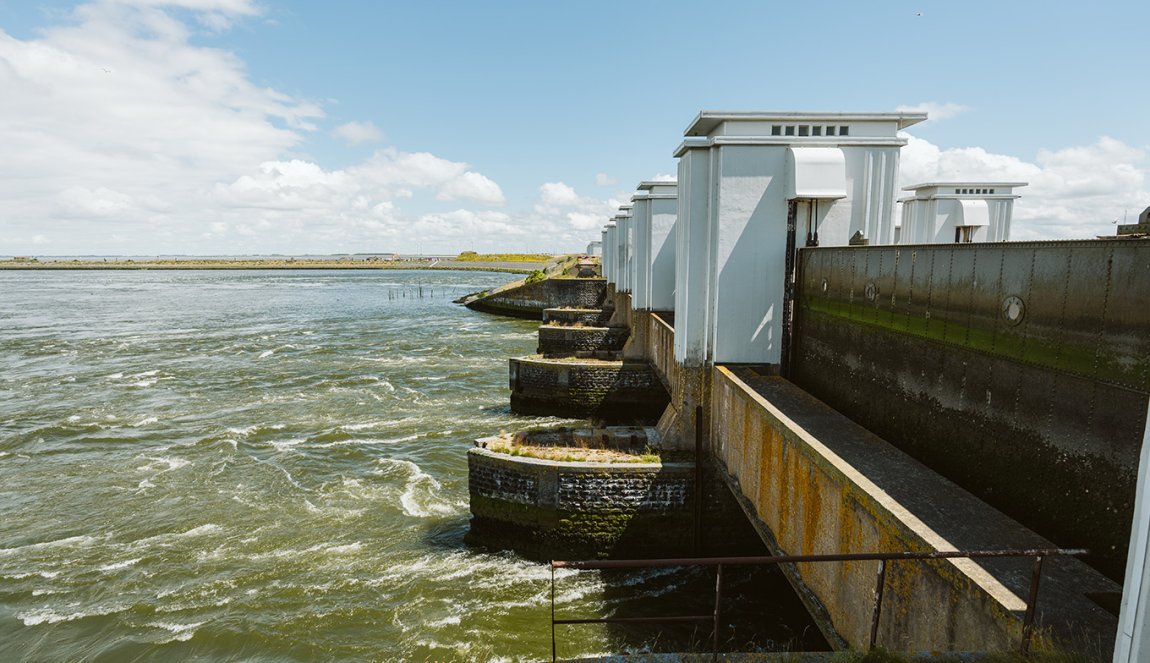
In front of the steel gates of the Afsluitdijk, millions of fish cavort in the IJsselmeer. They are all looking for a way to get to the North Sea, but the huge dam between fresh and salt water holds them captive. While they are desperately looking for a way out, hundreds of screeching seagulls attack them and fish them out. In the midst of this seemingly hopeless situation, an extraordinary project is being created to give fish back their way back to their natural habitats: the "Fish Migration River", a solution that is unique in the world and combines nature and engineering in an impressive way.
A river through the dike: Why it is being built
The Afsluitdijk, which has been protecting the Netherlands from the floods of the North Sea since 1932, separates the former Zuiderzee - now the IJsselmeer - from the North Sea. This separation was necessary to ensure the safety of the people and to gain valuable land. "But at the same time, it was also an ecological disaster," says ecologist Chris Bakker of the nature conservation association It Fryske Gea in Friesland, the Netherlands, whose mission is to preserve and develop the region's natural landscapes.
The victims of the construction of the Afsluitdijk were the fish populations: "Many migratory fish species that migrate between fresh and salt water lost their natural migration routes and thus their livelihood," says Bakker. The fish migration river, "vismigratierivier" in Dutch, was designed to respond to this challenge. Its aim is to restore the natural migration of fish between the IJsselmeer and the North Sea without compromising the protective function of the Afsluitdijk.
Unique in the world
The fish migration river is the first project of its kind in the world. With a length of four kilometres and a spiral structure that simulates gently sloping water currents, it allows smaller fish to overcome the difference in altitude between the North Sea and the IJsselmeer. "Large fish such as salmon and adult eels manage to swim through the open gate against the strong current. Small fish, on the other hand, don't stand a chance." These include smelt, sticklebacks as well as young eels and young sea trout, which are known for their migrations between fresh and salt water. From now on, they will all be able to use the fish migration river.
This could lead to a significant recovery of fish stocks and promote biodiversity in the IJsselmeer and the North Sea. In addition, the fish migration river creates new habitats for other aquatic organisms and plant species that can settle in the different current conditions. This enrichment of the ecological spectrum contributes to the stabilisation of the entire coastal and inland water ecosystems. This unique project is therefore being followed with great interest by scientists worldwide.
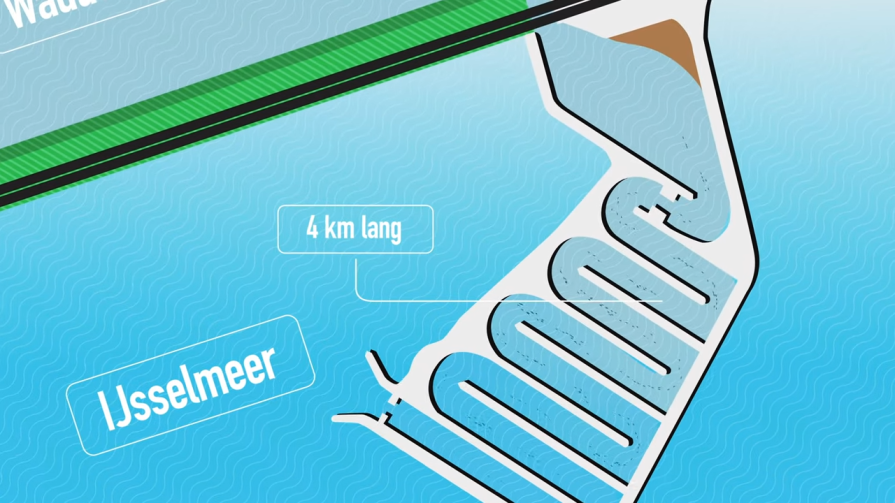
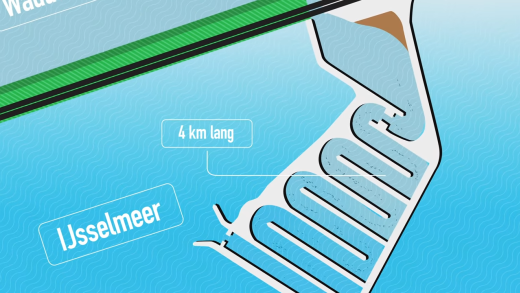
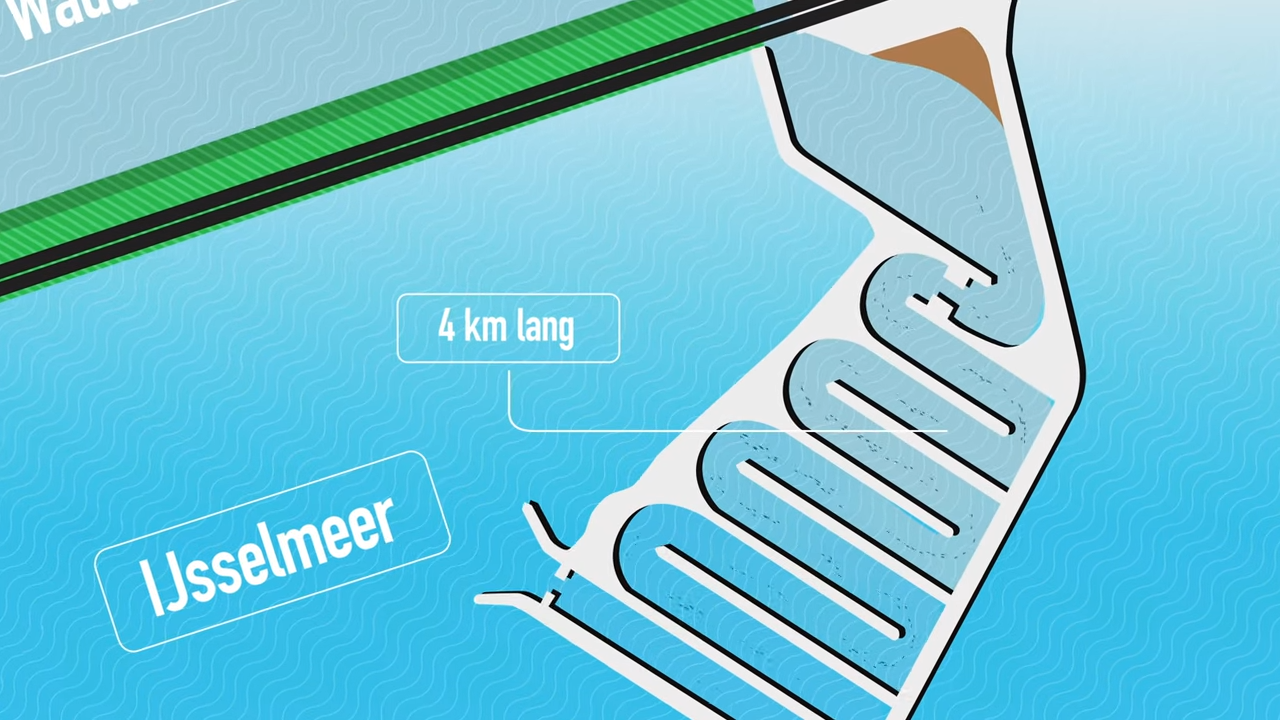
Costs and financing
The costs for the construction of the fish migration river amount to about 55 million euros. This huge sum is financed by a combination of public funds, European funding and contributions from private organisations. The Netherlands, known for its expertise in water management, is committed to taking this innovative step to ensure the balance between safety and ecology. Construction of the fish migration river began in 2018 and is expected to be completed by 2026.
Function in water management
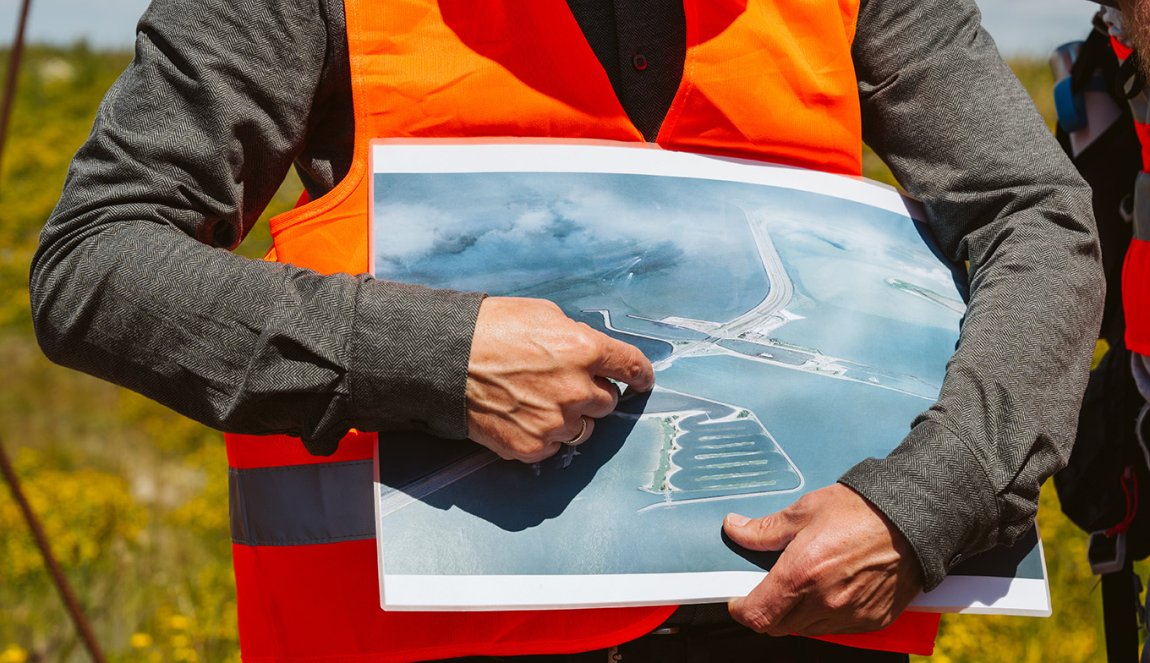
Fish migration flows play a crucial role in water management in the Netherlands. On the one hand, it makes it possible to restore natural fish migrations, which are crucial for the ecological balance in the affected areas. And on the other hand, it helps to improve the water quality in the IJsselmeer, as the exchange between fresh and salt water brings important nutrients and oxygen into the system.
"In addition, the river is designed in such a way that it can react flexibly to the water level in both waters. When water levels in the North Sea are high, the flow can be regulated or stopped so as not to jeopardize dike protection," says Chris Bakker. This flexibility is an integral part of Dutch water management, which aims to balance safety and environmental interests.
A look into the future
The fish migration river on the Afsluitdijk is more than just a technical structure – it is a symbol of the change in the way we deal with nature. At a time when climate change and biodiversity loss are becoming increasingly pressing issues, this project shows how technical innovation and environmental responsibility can go hand in hand.